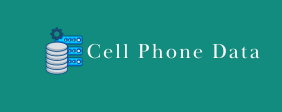Cold calling can feel like a shot in the dark. You dial numbers, hoping to connect with someone who might be interested, often facing rejection. But what if you could turn that shot in the dark into a targeted, data-driven approach? The secret lies in leveraging analytics. By understanding your data, you can transform your cold calling efforts from a frustrating guessing game into a highly efficient and successful strategy.
Why Analytics is Your Cold Calling Secret Weapon
Many perceive cold calling as a numbers game – the more calls, the more chances. While volume has its place, intelligent cold calling prioritizes quality over sheer quantity. Analytics provides the insights you need to make every call count. Instead of blindly dialing, you’ll be armed with information about potential leads, their likely pain points, and phone number data even the best times to reach them. This data-backed approach not only increases your chances of success but also significantly boosts your team’s morale by reducing wasted effort.
Identifying and Qualifying High-Potential Leads
The first step in data-driven cold calling is using analytics to identify leads with the highest potential.
Understanding Your Ideal Customer Profile (ICP)
Start by deeply understanding your Ideal Customer Profile. Who benefits most from your product or service? What are their industry, company size, revenue, and key challenges? Use your existing customer data to build a robust ICP. Look for commonalities among your most successful clients. Analytics tools can help you segment this data and identify patterns.
Leveraging Website and CRM Data
Your website is a goldmine of information. Track visitor behavior:
- Pages visited: Which product or service pages are they Browse?
- Time on page: Are they spending significant time on specific content?
- Download history: Did they statistics and trends supporting email marketing download a whitepaper or case study?
- Form submissions: Even partial form fills can indicate interest.
Integrate this with your CRM data. Look at past interactions, lead sources, and previous sales cycles. A lead who has visited your pricing page multiple times or downloaded a relevant industry report is a much warmer prospect than someone who has never interacted with your brand.
Optimizing Your Cold Calling Strategy
Once you’ve identified potential leads, analytics helps refine your approach.
Personalizing Your Outreach with Data Insights
Generic scripts are often ignored. With analytics, you can personalize your message. If a lead downloaded a whitepaper on “Solving X benin businesses directory Problem,” your opening line could directly address “X Problem” and how your solution helps. Knowing their industry allows you to use relevant terminology and examples. This immediate relevance grabs their attention and shows you’ve done your homework.
Timing Your Calls for Maximum Impact
When are your prospects most likely to answer and engage?
- Geographic time zones: Obvious, but crucial.
- Industry patterns: Do certain industries have peak and off-peak hours?
- Past call data: Analyze your own team’s call logs. When are you getting the most connects and positive outcomes? Tools can highlight trends in call answer rates based on day of the week and time of day.
Measuring and Refining for Continuous Improvement
Analytics isn’t a one-and-done solution; it’s an ongoing cycle of measurement and refinement.
Tracking Key Performance Indicators (KPIs)
Monitor KPIs beyond just the number of dials. Track:
- Connect rate: Percentage of calls that result in a live conversation.
- Conversion rate: Percentage of connects that lead to a discovery call or meeting.
- Talk time: How long are productive conversations lasting?
- Lead-to-opportunity rate: How many qualified leads become actual opportunities?
A/B Testing Your Approach
Experiment with different scripts, call times, and opening lines. Use analytics to compare the performance of each variation. For example, A/B test two different subject lines for your follow-up emails, or two different ways of introducing your product on the call. The data will tell you what resonates most with your audience.
By embracing analytics, cold calling transforms from a numbers game into a strategic, data-powered initiative. You’ll make fewer, more impactful calls, engage more effectively with your prospects, and ultimately drive higher conversion rates. Start leveraging your data today and watch your cold calling success soar.
